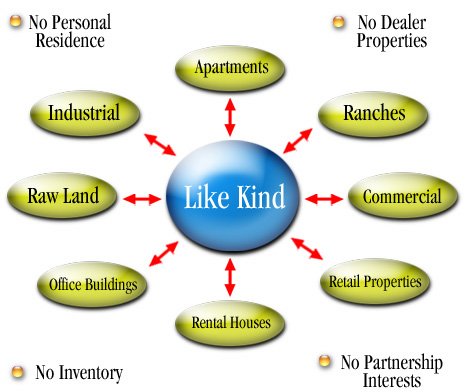

Create your own web pages in minutes...
Copyright 2006-2023 CMB Realty & Mortgage. All Rights Reserved.
892 Horcajo Street, Milpitas, CA 95035
Phone: (408) 416-3963 | Fax: (888) 258-9029 | Email: cbui@comcast.net
1031 EXCHANGE
7 Steps To A Successful 1031 Tax-Deferred Exchange
- Consult with your tax and financial advisors to determine if a tax-deferred exchange is appropriate for your circumstances and compatible with your investment goals.
- Listing the Relinquished Property for sale with a licensed real estate broker. The Exchanger will list the Relinquished Property with a real estate broker. The broker/agent will disclose the intent to complete an exchange in the listing agreement.
- Offer, Counter Offer and Acceptance. The Exchanger enters into contract with the Buyer for the sale/exchange of the Relinquished Property. The broker/agent discloses the Seller/Exchanger's intent to exchange into the Purchase Agreement and Receipt for Deposit.
- Open Escrow for the Relinquished Property and coordinate with the Facilitator. All earnest money deposits should be placed with the Escrow Company. The Facilitator prepares the exchange agreement and the necessary amendments and assignments and coordinates with the escrow holder. The close of escrow of the Relinquished Property and the receipt of the net proceeds by the Facilitator completes Phase I of a tax-deferred exchange. Important: The exchange documents must be in place and signed by all parties prior to close of escrow.
- Identify Replacement Property. The Exchanger must identify all Replacement Properties with 45 days from the close of escrow of the Relinquished property. The identification must be in writing, signed by the Exchanger, and sent to the Facilitator by midnight of the 45th days.
- Writhing the Contract for the Replacement Property. After closing on Relinquished Property the Exchanger has 180 days to acquire the Replacement Property. With the help of his or her agent the Exchanger enters into contract to purchase the Replacement Property from the Seller. In the contract to purchase the agent discloses the Exchanger's intent to complete the exchange and obtains the Seller's cooperation.
- Open escrow for the Replacement Property. The Facilitator prepares the Phase II Exchange documents and coordinates with the Replacement Property Escrow holder. At the instruction of the Facilitator the escrow holder deeds the Replacement Property from the seller directly to the Exchanger. The funds held in trust by the Facilitator are placed in escrow and the Replacement Property is purchased by Facilitator from the seller. The transaction is closed as Phase II of a delayed exchange.
The Basic Criteria of a Successful Tax Deferred Exchange
- First, Investor should verify with their Accountant, Financial Advisor, and Attorney that an exchange is in their best interest.
- Intent must be to exchange. Exchange language should be added to Both the sale and purchase contract.
- Use a "facilitator" to accommodate the exchange transaction.
- Trade for like kind property.
- Follow the 45/180 day rule. An Exchange must identify replacement property in writing, within 45 days from the close of escrow of the Relinquished property and escrow must close within 180 days of such date.
- Follow identification requirements: a) Property Rule b) 200% Rule c) 95% Rule
- Trade equal and up in equity and debt.
Treasury Regulations Concerning Identification of Replacement Property
Regardless of the number of relinquished properties transferred by the Exchanger as part of the same exchange, the maximum number of replacement properties that the Exchanger can identify is as follows:
Three Property Rules:
Three properties with regard to the fair market values of the replacement properties.
OR
200 Percent Rule:
Any number of properties as long as their aggregate fair market value as of the end of the identification period does not exceed 200 percent (2x) of the aggregate fair market value of all the relinquished properties as of the date the relinquished properties were transferred by the Exchanger.
OR
95 percent Exception:
Any number of replacement properties identified before the end of the identification period and received before the end of the exchange period, but only if the Exchanger receives before the end of the exchange period identified replacement property the fair market value of which is at least 95 percent of the aggregate fair market value of all identified replacement properties.
Additionally: RE: Description of Replacement Property [IRS Section 1031 (K)(1)(C)(3)]
Replacement property is identified only if it is unambiguously described in the identification notice or exchange agreement. Real property generally is unambiguously described if it is described by a legal description, street address, or distinguishable name (e.g. the Mayfair Apartment Building).
Please Note:
If, as of the end of the identification period, the taxpayer has identified more properties as replacement properties than permitted by Section 1031 (k)(k)(c)(4)(I), as described above, the taxpayer is treated as if no replacement property had been identified.
Graphical Illustration:












